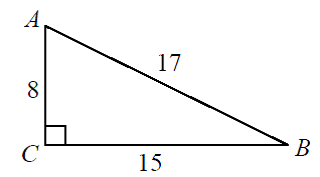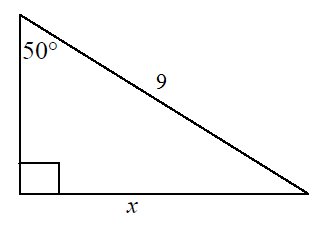Free to Join!
Easily See Your Progress
 We track the progress you've made on a topic so you know what you've done. From the course view you can easily see what topics have what and the progress you've made on them. Fill the rings to completely master that section or mouse over the icon to see more details.
We track the progress you've made on a topic so you know what you've done. From the course view you can easily see what topics have what and the progress you've made on them. Fill the rings to completely master that section or mouse over the icon to see more details.Make Use of Our Learning Aids
Earn Achievements as You Learn
 Make the most of your time as you use StudyPug to help you achieve your goals. Earn fun little badges the more you watch, practice, and use our service.
Make the most of your time as you use StudyPug to help you achieve your goals. Earn fun little badges the more you watch, practice, and use our service.Create and Customize Your Avatar
 Play with our fun little avatar builder to create and customize your own avatar on StudyPug. Choose your face, eye colour, hair colour and style, and background. Unlock more options the more you use StudyPug.
Play with our fun little avatar builder to create and customize your own avatar on StudyPug. Choose your face, eye colour, hair colour and style, and background. Unlock more options the more you use StudyPug.
Introduction: Understanding Sine Ratio in Trigonometry
Sine ratio is a fundamental concept in trigonometry, playing a crucial role in solving problems involving right-angled triangles. The introduction video provides an essential foundation for grasping this important trigonometric function. Sine ratio, along with cosine and tangent, forms the core of trigonometric ratios used to calculate sides and angles in right-angled triangles. This ratio is defined as the length of the opposite side divided by the length of the hypotenuse in a right-angled triangle. Understanding sine ratio is vital for various applications in mathematics, physics, engineering, and real-world scenarios. It allows us to determine unknown angles or side lengths in triangles, making it an indispensable tool in fields such as navigation, architecture, and astronomy. By mastering the concept of sine ratio, students can unlock a wealth of problem-solving techniques and gain a deeper appreciation for the practical applications of trigonometry in everyday life and advanced scientific disciplines.
Draw and label a right triangle to illustrate sine ratio, then calculate the angle. sinθ=135
Step 1: Draw and Label the Right Triangle
To start, we need to draw a right triangle. A right triangle has one angle that is exactly 90 degrees. Label this angle as 90 degrees. Next, we need to label the sides of the triangle. The side opposite the right angle is the hypotenuse, which is the longest side of the triangle. In this case, the hypotenuse is given as 13 units. The side opposite the angle θ is the opposite side, which is given as 5 units. The remaining side is the adjacent side, which we do not need to label for this problem.
Here is a simple illustration of the triangle:
|\
| \
| \
| \
| \
| \
|______\
Label the hypotenuse as 13 and the opposite side as 5. The right angle is at the bottom left corner.
Step 2: Understand the Sine Ratio
The sine ratio is defined as the ratio of the length of the opposite side to the length of the hypotenuse. Mathematically, it is expressed as:
\sin \theta = \frac{opposite}{hypotenuse}
In this problem, we are given that sinθ=135. This means that the opposite side is 5 units and the hypotenuse is 13 units.
Step 3: Calculate the Angle Using Inverse Sine
To find the angle θ, we need to use the inverse sine function, which is often denoted as sin−1 or arcsin. This function will allow us to find the angle whose sine is 135.
Using a calculator, enter the inverse sine function and input the ratio 135. Most calculators have a button for the inverse sine function, which may be labeled as sin−1 or arcsin. You may need to use the shift or second function key to access it.
Enter the following into your calculator:
sin−1(135)
After calculating, you should find that θ is approximately 23 degrees.
Step 4: Verify the Angle
To ensure the accuracy of our calculation, we can verify that the sum of the angles in the triangle adds up to 180 degrees. In a right triangle, the two non-right angles must add up to 90 degrees because the right angle is 90 degrees by itself.
We have calculated one of the angles to be 23 degrees. Therefore, the other angle must be:
90−23=67 degrees
So, the angles in the triangle are 90 degrees, 23 degrees, and 67 degrees, which add up to 180 degrees, confirming our calculation is correct.
Conclusion
By following these steps, we have successfully drawn and labeled a right triangle to illustrate the sine ratio and calculated the angle θ to be 23 degrees. This process involves understanding the sine ratio, using the inverse sine function, and verifying the results to ensure accuracy.
Here are some frequently asked questions about sine ratios:
1. What is the sine ratio?
The sine ratio is a trigonometric function defined as the ratio of the length of the opposite side to the length of the hypotenuse in a right-angled triangle. It is expressed as sin(θ) = opposite / hypotenuse, where θ is the angle in question.
2. How do you calculate the sine ratio?
To calculate the sine ratio, divide the length of the side opposite to the angle by the length of the hypotenuse. For example, if the opposite side is 3 units and the hypotenuse is 5 units, the sine ratio would be 3/5 or 0.6.
3. When should you use the sine ratio?
Use the sine ratio when you need to find an unknown side length (opposite or hypotenuse) or angle in a right-angled triangle, given one side length and one angle. It's particularly useful in problems involving height, distance, or angle calculations.
4. What is the relationship between sine and cosine ratios?
Sine and cosine are complementary functions. For any angle θ in a right-angled triangle, sin(θ) = cos(90° - θ). This relationship is known as the co-function identity. Additionally, sin²(θ) + cos²(θ) = 1, which is the Pythagorean identity.
5. Is the sine ratio always less than 1?
Yes, in a right-angled triangle, the sine ratio is always less than or equal to 1. This is because the opposite side can never be longer than the hypotenuse. The sine ratio equals 1 only when the angle is 90°, at which point the opposite side and hypotenuse have the same length.
Understanding the sine ratio to calculate angles and sides (Sin = o / h) is a crucial concept in trigonometry. However, to fully grasp this topic, it's essential to have a solid foundation in several prerequisite areas. These foundational concepts not only provide context but also enhance your ability to apply the sine ratio effectively.
One of the most closely related topics is using the cosine ratio to calculate angles and sides. This concept is vital for solving right triangle problems and complements the sine ratio. By understanding both sine and cosine, you'll be better equipped to tackle a wider range of trigonometric challenges.
Similarly, using the tangent ratio to calculate angles and sides is another essential skill. This knowledge helps in applying the angle sum property of triangles and provides a comprehensive understanding of trigonometric ratios.
To truly master these concepts, you should be familiar with combinations of SohCahToa questions. This practice will enhance your problem-solving skills and teach you about using a scientific calculator for sine calculations, which is invaluable for more complex problems.
Another crucial prerequisite is converting between degrees and radians. This skill is fundamental in trigonometry and is often required when working with sine ratios, especially in more advanced applications.
Understanding angles of elevation and depression is also important. This concept frequently appears in real-world applications of trigonometry and helps in solving angle of elevation problems, which often involve sine ratios.
Lastly, familiarity with finding inverse reciprocal trigonometric functions from graphs can be beneficial. This knowledge aids in understanding the inverse sine function usage, which is an extension of the basic sine ratio concept.
By mastering these prerequisite topics, you'll build a strong foundation for understanding and applying the sine ratio. Each concept contributes to a more comprehensive grasp of trigonometry, allowing you to approach problems with confidence and versatility. Remember, trigonometry is a interconnected field, and understanding these relationships will significantly enhance your problem-solving abilities and overall mathematical comprehension.






